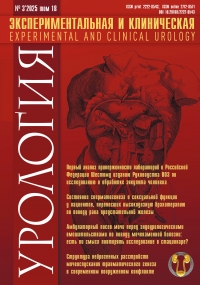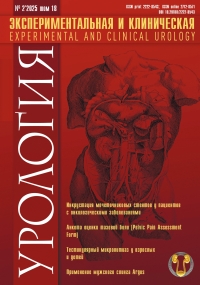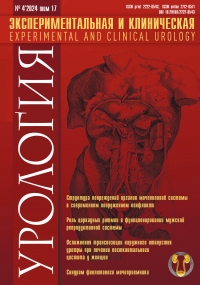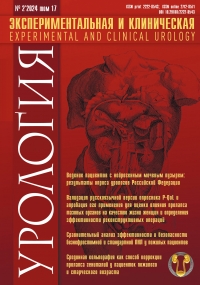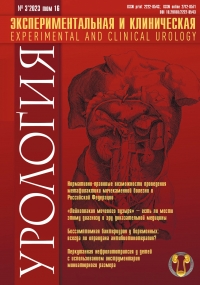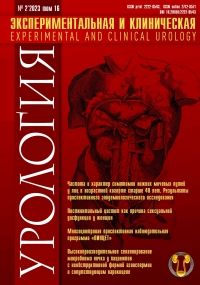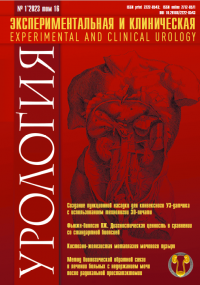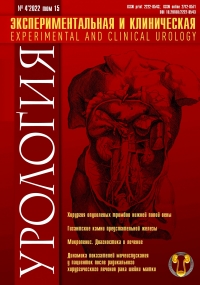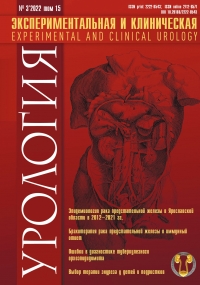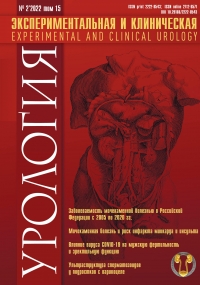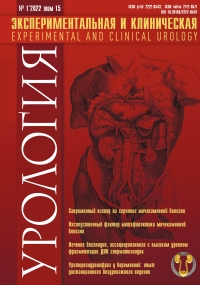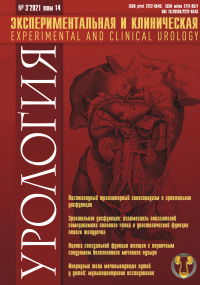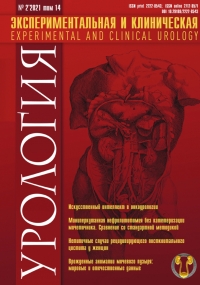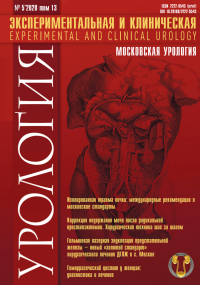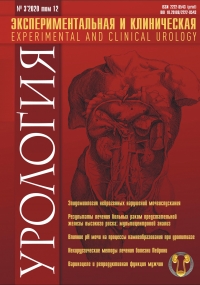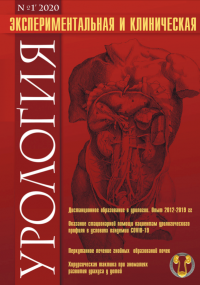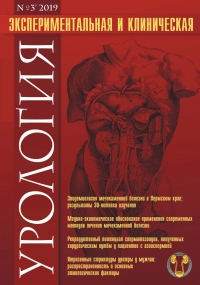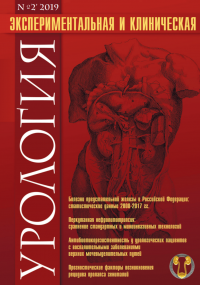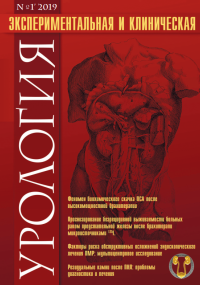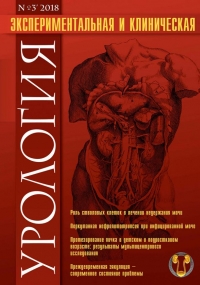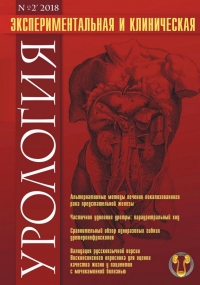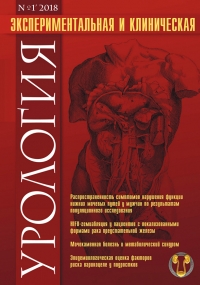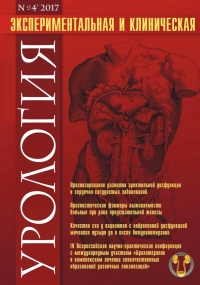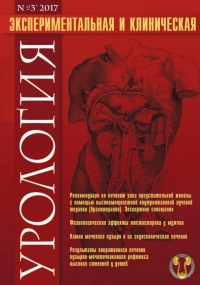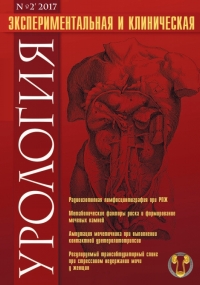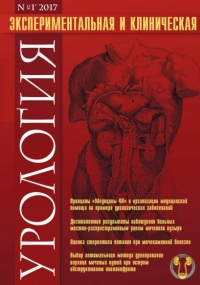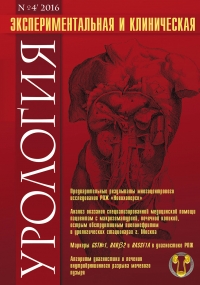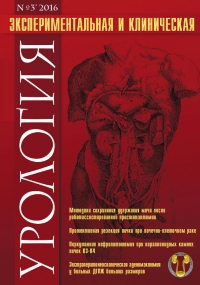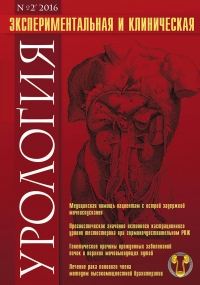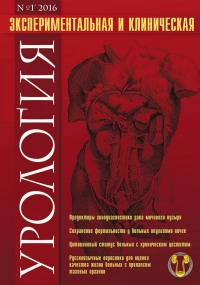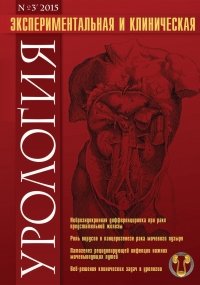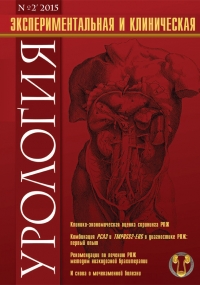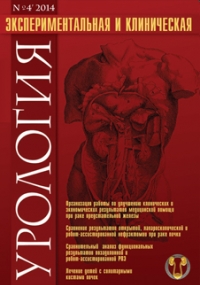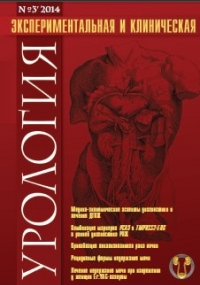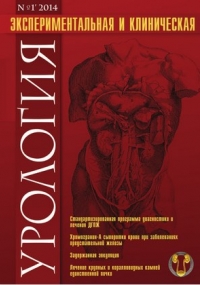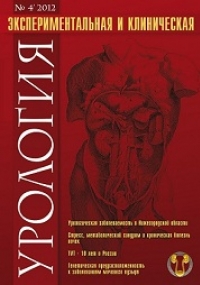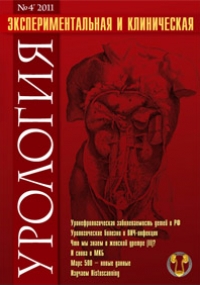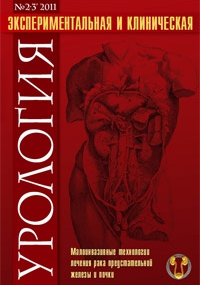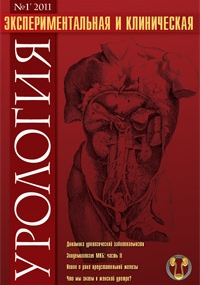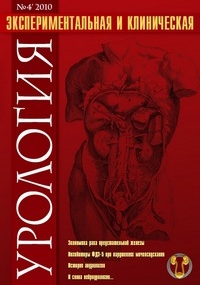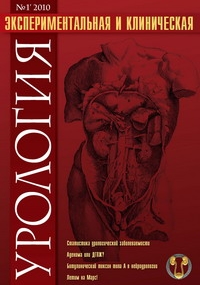Assessment of the rigidity of penis using magnetodynamic pressure indicator
 1873
1873 Introduction. An objective instrumental assessment of the rigidity of the penis to determine its degree still remains relevant nowadays. The aim of this work was to study the capabilities/possibilities of the magnetodynamic pressure indicator in assessing the rigidity of the penis.
Materials and methods. 90 men aged 26 to 69 years were examined. Erectile dysfunction was detected in 52 patients using the IIEF questionnaire. According to the I.Goldstein erection hardness score, 26 patients had fourth degree, 33 had the third, 28 - the second and 3 - the first. All participants underwent a pharmacological testwith intracavernousinjection of 10 µg of Alprostadil E1. In the sluggish state and after reaching the phase of rigidity or the largest blood filling, the rigidity of the penis was measured using a manufacturing magnetodynamic indicator of intraocular pressure IGD-03 produced by public company RSIE (Russia).
Results. According to the indicator, the tissues of the penis had the same rigidity in the sluggish state regardless of the degree of hardness during erection, and ranged from 12 to 14 units. In the state of erection, the rigidity values inside the cavernous bodies [statistically] significantly increased according to the I.Goldstein erection hardnessscore and were respectively 23 - 24 units at 1st and 2nd degrees, 43 - 47 units at 3rd and 58 - 60 at 4th.e tendency to the growth ofrigidity in the spongy bodywith the increase in the hardness score from 20 at 1st and 2nd degrees to 27 unitswith 4 degreeswas observed. The rigidity valuesinside the cavernous bodies[statistically]significantly increasedwith increasing axial elasticity - the reducing of the diameter to length ratio of the penis (D / L). In the groupwith D / L lessthan 0.26, the rigiditywas 59.8 ± 4.4 units,with D /L from 0.26 to 0.289 - 40.3 ± 2.0 units,with 0.29 and more - 23.8 ± 1.8 units. Three objective classes of penis rigidity were identified using the magnetodynamic pressure indicator. The first class is characterized by values below 25 units (the smallest rigidity), the second – by values from 25 to 50 units, the third – by values above 50 units (normal rigidity).
Conclusion. The data provided in this article showed the practical capability/possibility and value of using a magnetodynamic pressure indicator to assess the rigidity of the penis.
Authors declare lack of the possible conflicts of interests
| Attachment | Size |
|---|---|
| Download | 341.55 KB |


